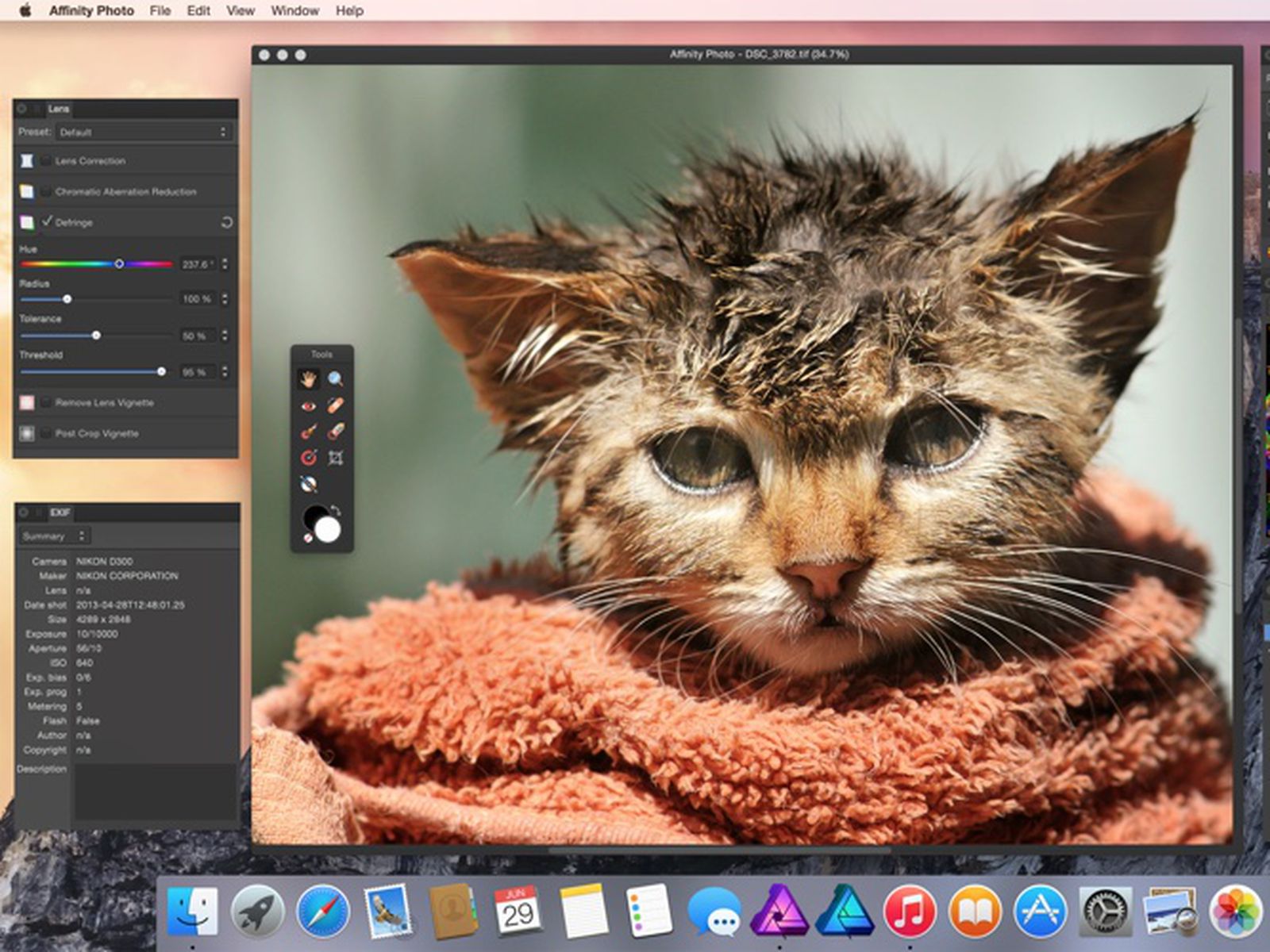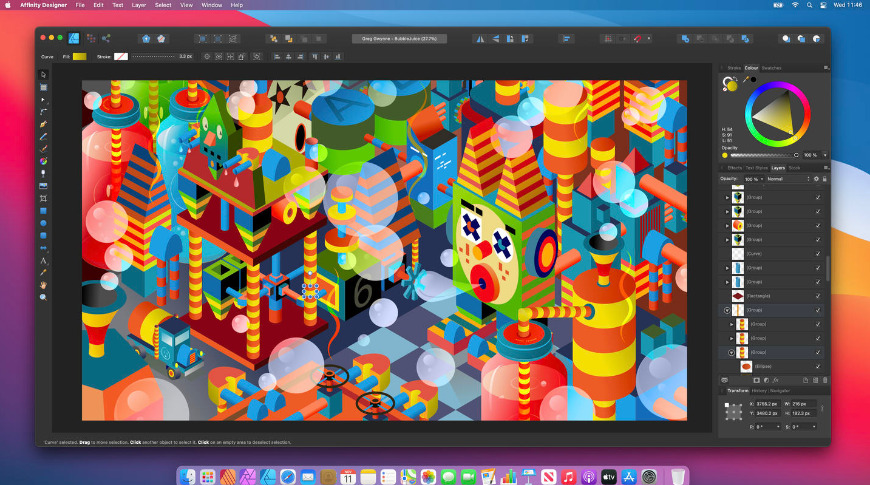

Adding layers, posterizing, applying and adjusting various effects was effortlessly smooth and rather quick. Affinity Photo is rather light, especially compared to its counterpart. That is all the more surprising when you check the CPU and RAM usage.
#AFFINITY PHOTO EDITOR FOR MAC CODE#
This is attributed to Affinity’s lack of bloatware, but more importantly because its back-end code is made operating independently of the system. Applying numerous edits happens instantly without rendering a preview or waiting for results.


Real-time editing is one of the key features that really stands apart. Once you get the past the initial tinkering, you will immediately notice how fast the program is. The right toolbar displays basic details of your image and can be further customized. You have a tools panel on the left, layers panel on the right with a histogram above it and a central toolbar in between, right below a menu bar. The layout of the interface is a standard, well-known type that won’t attract nor put off many. Of course, Affinity Photo for Windows has its own identity – the distinct purple color gives a fresh vibe to it, although I would have liked to see more of it. This makes a potential transition much easier. I say it’s a welcome look as it made me feel comfortable and familiar with the interface. Some may say it looks way too similar, insinuating a straight-up rip-off. The first thing I noticed was how similar Affinity Photo for Windows looks to Photoshop.


 0 kommentar(er)
0 kommentar(er)
